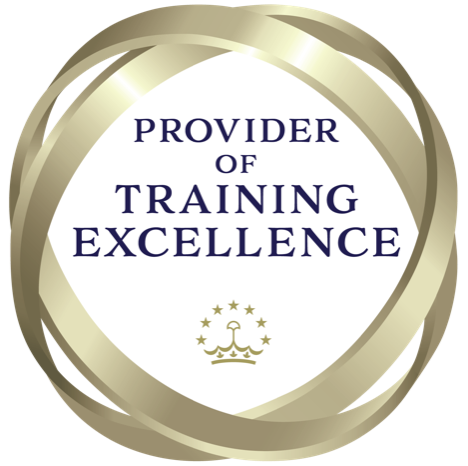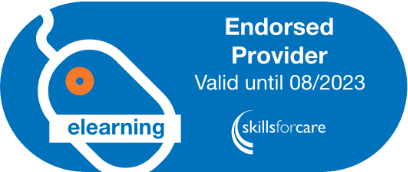01206 805359
Mon - Fri, 9am - 5pm



The ProTrainings First Aid at Work Level 3 (VTQ) qualification (FAW) is ideal for most businesses whose risk assessment has identified that they require a fully trained first aider for their workplace. All courses are delivered, evaluated and quality assured to meet the new guidelines set out by the HSE in October 2013 and meet the requirements of the First Aid at Work (First Aid) regulations 1981 and subsequent changes.
Also included to comply with the latest HSE and ERC guidelines, are Tourniquets and Haemostatic dressings.
All our first aid courses fully meet the latest UK and European Resuscitation Council Guidelines as per the HSE requirements. ProTrainings Vocational Training Qualifications (VTQ) are fully recognised by the HSE as Trade Body Qualifications.
This course must be at least 18 contact hours and run over a minimum of 3 days and the certificate is valid for 3 years. To renew you need to attend a 12 contact hour 2-day FAW requalification course.
In May 2016 the HSE and Awarding Organisations announced that computer-based blended training is now allowed for all workplace first aid courses. You can now become a fully qualified First Aider in the workplace, with two days of classroom training after completing this online course. Reduce your training and travel costs by using our engaging, blended online video-based course. Learn at your pace, one to one with your instructor at a time that suits you.
This blended FAW course meets all of the requirements under the HSE and Awarding Organisations and is available as a ProTrainings or Regulated Qualification.
A modern approach to training backed up by years of experience providing online, blended and classroom courses. Clear, concise and engaging, when you choose ProTrainings you reduce the cost, not the quality of your training.
Candidates completing our FAW courses receive access to our video library for refreshing skills and reference
The HSE strongly recommend that all first aiders complete an annual first aid refresher course and our online course meets this requirement.
Please note that learners undertaking a ProTrainings Trainings Course have the option to choose to take a regulated qualification. The ProTrainings First Aid at Work Qualification is accepted by TQUK as a qualification for first aid instructors who wish to offer their regulated qualifications. This is because it meets all of the required learning outcomes and due diligence.
Please be advised that the classroom course has a minimum age requirement of 14.
This qualification and most of the other ProTrainings qualifications are Endorsed by TQUK to show our commitment to extra levels of compliance and quality assurance.
Companies, organisations or agencies are encouraged to contact us for group discounts and information about onsite training and how our system can be used to track and monitor your staff training.
This course comes with 18.0 hours of CPD, although the time to complete the course online may be less than this. Total course time includes 5 hours and 28 minutes of video training as well as knowledge reviews, final test, remedial help and reviewing downloaded material.
The content of this and all our courses has been independently certified as conforming to universally accepted Continuous Professional Development (CPD) guidelines and come with a Certified CPD Statement as well as a ProTrainings Certificate and for online courses an Evidence Based Learning statement.
Learning Outcomes
Unit 1: Emergency First Aid in the Workplace (credit can be given in some cases if already completed recently)
1 Understand the role and responsibilities of a first aider.
1.1 Identify the role and responsibilities of a first aider.
1.2 Describe how to minimise the risk of infection to self and others.
1.3 Identify the need for establishing consent to provide first aid.
1.4 Complete an accident report form.
1.5 Identify the first aid equipment that should be available in a workplace.
1.6 Describe the safe use of first aid equipment.
2 Be able to assess an incident.
2.1 Conduct a scene survey.
2.2 Conduct a primary survey of a casualty.
2.3 Give examples of when to call for help.
3 Be able to manage an unresponsive casualty who is breathing normally.
3.1 Assess a casualty’s level of consciousness.
3.2 Open a casualty’s airway and check breathing.
3.3 Explain why it is important to place an unconscious casualty into the recovery position.
3.4 Place an unresponsive casualty in the recovery position.
3.5 Manage a casualty who is in seizure.
4 Be able to manage an unresponsive casualty who is not breathing normally.
4.1 Recognise the need to commence Cardio Pulmonary Resuscitation.
4.2 Demonstrate Cardio Pulmonary Resuscitation using a manikin.
5 Be able to recognise and assist a casualty who is choking.
5.1 Describe how to identify a casualty with a
Partially blocked airway
Completely blocked airway
5.2 Administer first aid to a casualty who is choking.
6 Be able to manage a casualty with external bleeding.
6.1 Identify the types of external bleeding.
6.2 Control external bleeding.
7 Be able to manage a casualty who is in shock.
7.1 Recognise shock.
7.2 Administer first aid to a casualty who is in shock.
8 Be able to manage a casualty with a minor injury.
8.1 Administer first aid to a casualty with small cuts, grazes and bruises.
8.2 Administer first aid to a casualty with minor burns and scalds.
8.3 Administer first aid to a casualty with small splinters
Unit 2: Recognition and Management of Illness and Injury in the Workplace
1 Be able to conduct a secondary survey.
1.1 Identify the information to be collected when gathering a casualty history.
1.2 Conduct a head to toe survey.
2 Be able to administer first aid to a casualty with injuries to bones, muscles and joints.
2.1 Recognise suspected; Fractures, Dislocations, Sprains and strains
2.2 Administer first aid for; Fractures, Dislocations, Sprains and strains
3 Be able to administer First Aid to a casualty with suspected head and spinal injuries.
3.1 Recognise suspected; Concussion, Skull fracture, Cerebral compression, Spinal injury
3.2 Administer first aid for suspected; Concussion, Skull Fracture, Cerebral compression, Spinal injury
4 Be able to administer First Aid to a casualty with suspected chest injuries.
4.1 Recognise the different types of chest injury.
4.2 Administer first aid for a chest injury.
5 Be able to administer First Aid to a casualty with burns and scalds.
5.1 Recognise the factors that affect the severity of burns and scalds.
5.2 Administer first aid for burns involving; Dry heat, Wet heat, Electricity and Chemicals
6 Be able to administer First Aid to a casualty with an eye injury.
6.1 Give examples of common eye injuries.
6.2 Administer first aid for eye injuries involving; Dust, Chemicals and Embedded objects
7 Be able to administer First Aid to a casualty with sudden poisoning.
7.1 Identify the routes that poisons can take to enter the body.
7.2 Administer immediate first aid to a casualty affected by sudden poisoning.
7.3 Identify sources of information for treating those affected by sudden poisoning.
8 Be able to administer First Aid to a casualty with anaphylaxis.
8.1 Identify common triggers for anaphylaxis.
8.2 Recognise anaphylaxis.
8.3 Administer immediate first aid for a casualty suffering from anaphylaxis.
9 Be able to provide First Aid to a casualty with suspected major illness.
9.1 Recognise major illnesses including; Heart Attack, Stroke, Epilepsy, Asthma and Diabetes
9.2 Administer first aid to a casualty suffering from major illnesses including; Heart Attack, Stroke, Epilepsy, Asthma and Diabetes
“Super, quick to do and easy to understand ”
“Extremely thorough training for equine first aid at work. ”